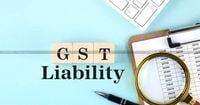New Delhi — In a move that has sparked widespread concern and debate, India’s Finance Ministry is reportedly contemplating the imposition of a 5% Goods and Services Tax (GST) on UPI transactions exceeding ₹2,000. This proposal, if implemented, could significantly alter the way millions of Indians make daily purchases, from groceries to electronics, using digital wallets and UPI apps. Sources within the Finance Ministry indicate that the initiative aims to bring high-value UPI transactions into the indirect tax net, thereby supporting a broader strategy to enhance GST collections.
Finance Minister Nirmala Sitharaman is expected to make the final decision on this matter before the upcoming GST Council meeting. The proposal has been floated by top officials in the Central Board of Indirect Taxes and Customs (CBIC), who suggest that the 5% GST should apply to UPI transactions specifically for the purchase of goods and services, mirroring the current tax applied to credit and debit card transactions at points of sale.
The potential tax has left many small business owners and salaried professionals feeling anxious. “This feels like a penalty for going digital,” remarked Ritesh Sharma, a 31-year-old marketing executive from Jaipur. “First, we were encouraged to go cashless after demonetization, and now we’re being taxed for it?” For homemakers like Priya Menon in Kochi, UPI has become a daily necessity. “If I have to pay 5% more for anything costing ₹2,101, that's ₹105 just gone. In what sense is that fair?” she questioned.
As discussions around the proposal continue, it is crucial to note that analysts believe the charge may not apply to person-to-person (P2P) transfers, such as sending money to friends or family. Anshul Mehta, a tax consultant in Delhi, explained, “Personal transfers and commercial payments differ greatly. Ideally, the tax would only apply when UPI is used to purchase something — like a phone on Amazon or a meal in a restaurant.”
Opposition parties have been quick to criticize the proposal. Congress MP Jairam Ramesh tweeted, “From pushing for Digital India to taxing it — this government has truly mastered the art of U-turns.” He further emphasized that this move would burden the middle class even more. Trinamool Congress MP Mahua Moitra labeled the plan as “anti-people” and “anti-digital economy,” warning that such a step could drive people back to cash transactions, undermining years of progress in digital inclusion.
India's digital payment landscape has witnessed explosive growth in recent years, with UPI processing around 13 billion transactions monthly as of March 2025, valued at trillions of rupees. The convenience of UPI has made it a preferred payment method across various sectors, from luxury retailers to street vendors. However, many fear that the introduction of a GST could make consumers rethink their purchasing decisions. Radhika Agarwal, a startup founder, voiced her concerns: “Thanks to flawless UPI payments, startups have exploded. Imagine a tiny company trying to sell a ₹2,500 product online; they could lose consumers who refuse to pay an additional ₹125 in tax.”
Another critical aspect of the ongoing discussions is whether the Reserve Bank of India (RBI) will support this proposal. The RBI has historically maintained that digital payments should remain free or low-cost to ensure financial inclusion. An anonymous RBI official stated, “We were not contacted about this yet. Any decision that deters digital transactions would go against everything we have been working for.”
As of now, no definitive decision has been made, and the Finance Ministry has not released any official notifications or clarifications regarding the potential tax. Insiders report that discussions are serious and at an advanced stage, with everyone focused on the upcoming GST Council meeting. Should the proposal be approved, the new tax could be implemented as early as July 1, 2025, coinciding with the start of the second quarter of the fiscal year. Meanwhile, digital-savvy Indians are anxiously awaiting updates.
In a related development, flat owners in gated societies across India are also facing potential increases in their monthly charges due to an existing GST rule that is now being enforced more strictly. This rule could result in an additional 18% GST on maintenance charges if they exceed ₹7,500 per month and the society’s annual turnover surpasses ₹20 lakh.
This so-called “shocking GST rule for gated societies” has been in place since 2017 but has recently come into the spotlight due to increased scrutiny from tax officials. Many housing societies had either been unaware of the rule or were not charging GST, mistakenly believing it only applied to the amount exceeding ₹7,500. According to the CBIC clarification, if the maintenance charge exceeds ₹7,500, GST applies to the entire amount.
In 2023, the Appellate Authority for Advance Ruling (AAAR) declared that open car parking spaces sold by builders do not form a natural part of the flat sale, making them separately taxable. This means that if a flat owner pays ₹2 lakh for an open parking spot, they will incur an additional ₹36,000 in GST.
Despite the Madras High Court ruling in 2021 that stated GST should only be charged on the portion exceeding ₹7,500, this judgment is not binding across India. Consequently, many GST officers continue to adhere to the CBIC’s interpretation, leaving flat owners in a precarious situation regarding their tax liabilities.
For those affected, the implications are significant. For example, a monthly maintenance fee of ₹10,000 would incur an 18% GST of ₹1,800, raising the total payable monthly to ₹11,800. If calculated annually, this results in an additional ₹21,600 in GST costs. Such increases can be particularly burdensome for middle-income families already grappling with inflation.
Flat owners are encouraged to engage with their Resident Welfare Associations (RWAs) to clarify their GST registration status and ensure compliance with the new enforcement measures. It is advisable to conduct society-level meetings to educate residents about their potential GST liabilities and explore ways to mitigate the financial impact.
As the situation continues to evolve, both UPI users and flat owners in gated societies remain on edge, awaiting further developments from the Finance Ministry and tax authorities.






